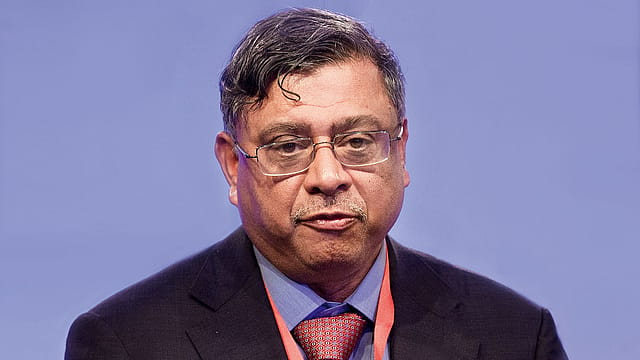Pvt sector leaders in PSBs: End of an experiment
ADVERTISEMENT

When P.S. Jayakumar was made managing director and chief executive officer of Bank of Baroda (BOB) four years ago, the state-owned bank had been going through a rough patch. Its name had been sullied by an alleged fraud and money laundering to the tune of ₹6,000 crore.
The appointment of the seasoned banker who had spent more than 23 years at Citibank was in line with the government’s decision to bring in talent from the private sector to helm public sector banks to improve management rigour—a crucial reformative step at the time. Jayakumar had his task cut out.
Jayakumar’s four-year term ended this October 12. It was supposed to end last year, but he had got a one-year extension primarily due to the amalgamation of Vijaya Bank and Dena Bank with BOB which was notified by the government on January 2 this year, and which took effect on April 1. Since there was no communication from the government as to another extension, BOB, in an exchange filing on October 14, notified the cessation of Jayakumar’s role at the bank with effect from October 12.
During the 14 quarters from December 2015 to March 2019 that Jayakumar helmed BOB, the bank saw an uptick in business. While the bank is yet to announce the results for quarter ended September 2019, the performance of quarter ended June 2019 is not comparable owing to the effect of the mega merger. In terms of top-line and bottom-line, BOB under Jayakumar saw a muted rise in standalone income—muted because the bank suffered four quarters of heavy losses as the cumulative loss exceeded ₹10,665 crore.
January 2026
Netflix, which has been in India for a decade, has successfully struck a balance between high-class premium content and pricing that attracts a range of customers. Find out how the U.S. streaming giant evolved in India, plus an exclusive interview with CEO Ted Sarandos. Also read about the Best Investments for 2026, and how rising growth and easing inflation will come in handy for finance minister Nirmala Sitharaman as she prepares Budget 2026.
As of the quarter ended March 2019, BOB’s deposits and advances look much better when compared to the figures at the end of the quarter ended June 2017, which was ₹5,70,608 crore and ₹3,77,607 crore respectively. This was when Jayakumar had completed almost two years at BOB. In the quarter ended March 2019, BOB registered an absolute growth of 11.9% in deposits and 24.2% in advances compared to the quarter ended June 2017.
The scourge of non-performing assets that plagued most public sector banks did not spare BOB, too. BOB’s gross and net NPAs stood in excess of ₹38,934 crore and ₹21,806 crore in the quarter ended December 2015. In the quarter ended March 2018, the parameters crossed ₹56,480 crore and ₹23,483 crore—the highest during Jayakumar’s tenure. These would decline over 14.6% and 33.5% to over ₹48,233 crore and ₹15,610 crore in the quarter ended March 2019.
As a percentage of advances, gross NPAs were in double digits in 11 out of the 14 quarters that Jayakumar helmed BOB. And there were 10 quarters out of 14 when net NPAs as a percentage of advances breached the 5% mark. At 9.61% and 3.33%, gross and net NPAs as a percentage of advances in the quarter ended March 2019 reflect a reduction of 265 and 216 basis points (100 basis points equals 1%) respectively compared to 12.26% and 5.49% in the quarter ended March 2018.
BOB is now bigger and stronger thanks to the merger. During Jayakumar’s time, the whole banking sector went through phases of big churn—demonetisation, burgeoning NPAs, and the Nirav Modi scam being some of the major causes. Given the circumstances under which he had to operate, he did all right. Matching his record won’t be easy for his successor.
